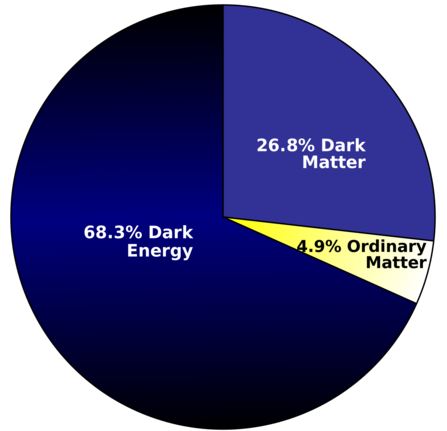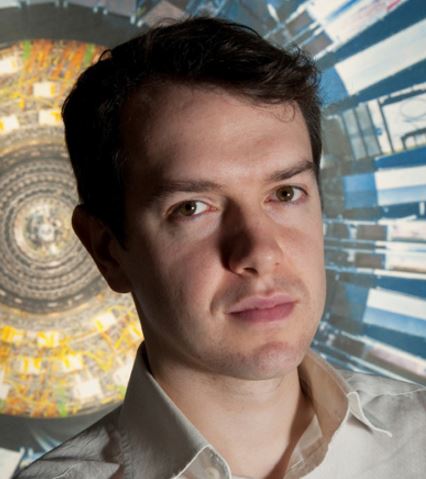Physics may have reached its limit, as far as our learning about science is concerned, specifically physics, i.e. we may be reaching the absolute limit of what we can understand about our world, the solar system, the Universe – about everything, says an eminent scientist.
We still have so many questions, says particle physicist Harry Cliff, who works on the Large Hadron Collider at CERN.
Scientists and lay people alike want to know why there is something rather than nothing, and why so much interesting stuff exists in the Universe.
 Dr. Harry Cliff is a particle physicist at Cambridge University and the Large Hadron Collider. He is also an in-house physicist at the Science Museum. (Image: ted.com)
Dr. Harry Cliff is a particle physicist at Cambridge University and the Large Hadron Collider. He is also an in-house physicist at the Science Museum. (Image: ted.com)
If you are seeking answers to these questions you may be in for a shock, warns Dr. Cliff. Despite the best efforts of researchers across the world, and the help of the Large Hadron Collider – the largest machine on Earth – we may never be able to explain all the weird and fascinating features of nature.
Have we hit the ceiling of physics?
Does this mean the end of physics? A deeply disconcerting and controversial line of thinking is emerging within the physics community – it may not be possible to get any further in our learning about the world around us through science.
During a recent TED Talk in Geneva, Switzerland, Dr. Cliff said:
“The next few years may tell us whether we’ll be able to continue to increase our understanding of nature or whether maybe, for the first time in the history of science, we could be facing questions that we cannot answer.”
His audience sat in an eerie silence when he added that the reason for this approaching limit may be because “the laws of physics forbid it.”
Dr. Cliff talks about the two most dangerous numbers in the Universe, which are responsible for all life as we know and witness it, as well as all the matter and structure that exists.
If these two numbers were just every-so slightly different, the Universe would be an empty vacuum, without anything at all – it would be nothing.
First Dangerous Number: THE HIGGS FIELD
The Higgs Field is an energy field scientists hypothesize exists everywhere in the Universe. It is accompanied by a fundamental particle, known as the Higgs Boson, which the field uses to continuously interact with other particles.
As a particle swims through the Higgs field it gains mass. As particles gain mass they become neutrons, electrons and protons – components of all the atoms that we are made of, as well as everything we can see around us.
Without the Higgs field we would not exist, neither would planet Earth, the Moon, the Sun or any of the celestial bodies we see in outer space.
 The Higgs Field is believed to be an energy field that exists everywhere in the universe. It is accompanied by a fundamental particle called the Higgs Boson, which the field uses to interact with other particles. As particles pass through the field they are ‘given’ mass – much like an object passing through treacle – and slow down. (Image: quantum-bits.org)
The Higgs Field is believed to be an energy field that exists everywhere in the universe. It is accompanied by a fundamental particle called the Higgs Boson, which the field uses to interact with other particles. As particles pass through the field they are ‘given’ mass – much like an object passing through treacle – and slow down. (Image: quantum-bits.org)
Physicists are pretty certain the Higgs field exists. In 2012, CERN scientists made a groundbreaking discovery when they detected the Higgs boson, a new elementary particle. According to the theory, there is no Higgs boson if there is no Higgs field.
Something perturbing about the Higgs field
However, Dr. Cliff and a significant number of other physicists say there is something mysterious about the Higgs field that troubles them.
He explains that according to the theory of quantum mechanics and Einstein’s theory of general relativity – the two theories in physics that are the basis of our understanding of the cosmos – the Higgs field should be performing one of two tasks.
It should be turned off or on. If it is turned off it will have a strength value of zero and would give particles no mass. If it is turned on, according to the theory, this ‘on value’ is absolutely enormous. The problem is, it does not appear to be fully on or off.
Dr. Cliff says:
“In reality, the Higgs field is just slightly on. It’s not zero, but it’s ten-thousand-trillion times weaker than it’s fully on value — a bit like a light switch that got stuck just before the ‘off’ position.”
“And this value is crucial. If it were a tiny bit different, then there would be no physical structure in the Universe.”
Scientists cannot understand why the Higgs field is so incredibly weak. CERN researchers hope to be able to answer this question by detecting brand-new particles at the recently upgraded particle accelerator (Large Hadron Collider). They have not found them yet.
Second Dangerous Number: THE STRENGTH OF DARK ENERGY
Dark energy is the name we give to the force that scientists say is making the Universe larger. Distant galaxies appear to be rapidly moving away from each other. The idea is that the Universe is expanding and has been doing so since the Big Bang. It is expanding at an ever-increasing rate.
Nobody understands what causes this faster and faster expansion. It is as if there were something in empty space providing a repulsive force (the opposite of gravity) that makes the Universe expand. Scientists call this dark energy.
 Scientists say that most of the Universe – 68.3% – is dark energy. (Image: Wikipedia)
Scientists say that most of the Universe – 68.3% – is dark energy. (Image: Wikipedia)
According to Dr. Cliff, this second dangerous number has been described by scientists as ‘the worst theoretical prediction in the history of physics.’
Dr. Cliff says:
“We don’t know what dark energy is. But the best idea is that it’s the energy of empty space itself – the energy of the vacuum.”
If that idea is accurate, it should be possible to measure all the energy in empty space to obtain a value representing the strength of dark energy. Theoretical physicists have done this, but there is one gaping problem with their answer.
Dr. Cliff explained:
“Dark energy should be 10120 times stronger than the value we observe from astronomy. This is a number so mind-boggling huge that it’s impossible to get your head around. This number is bigger than any number in astronomy – it’s a thousand-trillion-trillion-trillion times bigger than the number of atoms in the universe. That’s a pretty bad prediction.”
It is a good thing that dark energy is not as great as theorists predict. If the theoretical models were right, dark energy’s repulsive force would be mega-huge – everything would be ripped apart. Even the forces that bind atoms together would not be enough.
Such a powerful form of dark energy would mean that nothing would ever form. The Universe as we know it, with stars, planets, galaxies, etc. would not exist.
Physicists find it extremely frustrating that none of our current theories of the Universe can be used to measure dark energy properly, i.e. in a way that supports what has been observed.
We may never find the answer
Dr. Cliff believes there may be one way to get some answers. The problem is, he adds, we might never be able to prove them.
If there were some way we could confirm that our Universe is just one of billions of other universes – part of a gigantic multiverse, then “suddenly we can understand the weirdly fine-tuned values of these two dangerous numbers because in most of the multiverse dark energy is so strong that the universe gets torn apart, or the Higgs field is so weak that no atoms can form,” said Dr. Cliff.
String theory predicts the existence of many different universes. So, physicists will need to find new particles that support string theory. If they do exist, there is only one place in the world where they could be produced – the Large Hadron Collider at CERN.
In two or three years the Large Hadron Collider will be shut down again for upgrades. If nothing is found by then, we could be looking at the beginning of the end, as far as scientific enlightenment is concerned, warns Dr. Cliff.
Dr. Cliff concludes:
“The stakes now could not be higher. This summer, the LHC began its second phase of operation with an energy almost double what we achieved in the first run. What particle physicists are all desperately hoping for are signs of new particles, micro black holes, or maybe something totally unexpected emerging from the violent collisions at the Large Hadron Collider.”
“If so, then we can continue this long journey that began 100 years ago with Albert Einstein towards an ever deeper understanding of the laws of nature.”
“We may be entering a new era in physics. An era where there are weird features in the universe that we cannot explain. An era where we have hints that we live in a multiverse that lies frustratingly beyond our reach. An era where we will never be able to answer the question why is there something rather than nothing.”


Comments are closed.